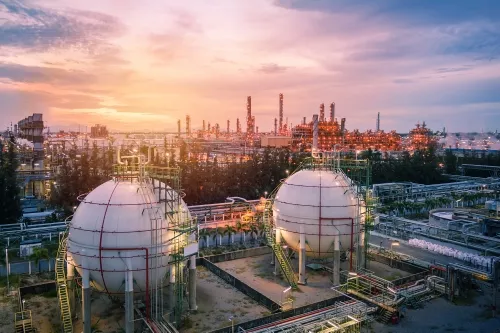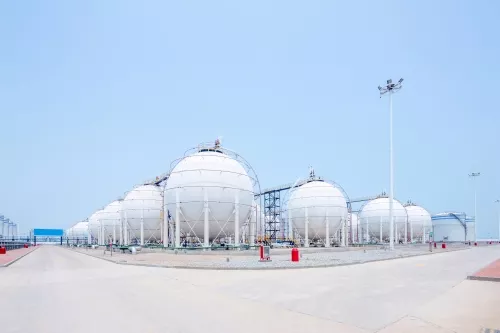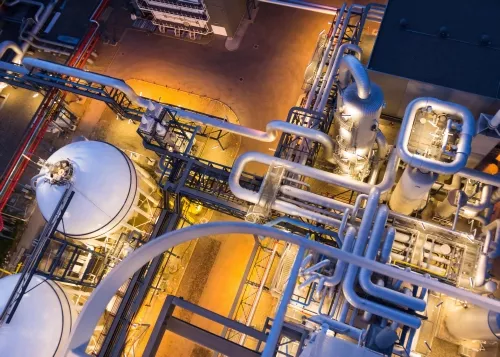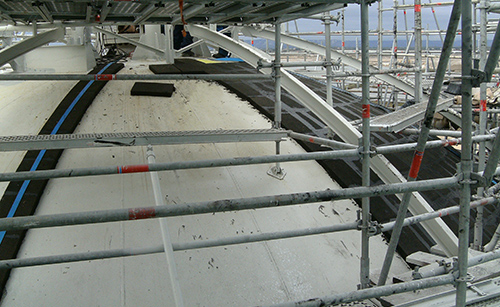Spherical storage tanks
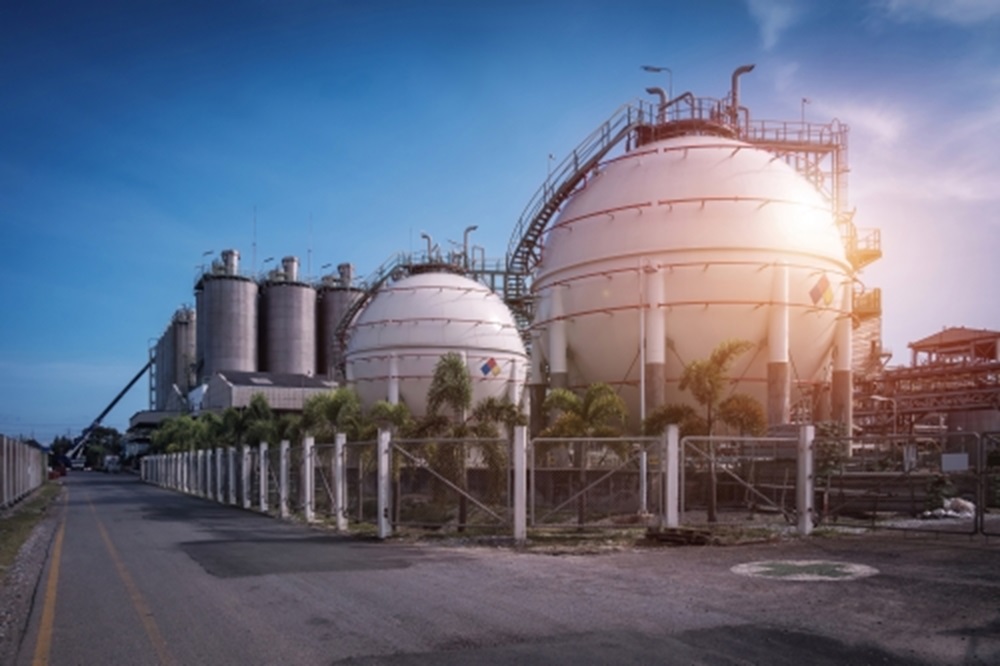
Thermal insulation solutions for spherical storage tanks operating at above or below ambient temperatures. Our systems limit heat transfer and fire risks and provide moisture and corrosion resistance so that process control is assured and energy costs are kept at a minimum.
Spheres are typically used to store below ambient temperature liquids and pressurized gases such as ammonia, propylene, LPG, butadiene, etc. Most (or many) spheres operate at low temperatures with -50°C (-58°F) as a lower limit. Gases are stored under pressure at a temperature lower than their liquefaction temperature.
The main advantage of the spherical construction is that the stress concentration in a spherical shape will be minimal while storing pressurized gases as the stress resistance will be uniform over the total surface. Another advantage is the reduced exterior surface for a given storage volume as compared to all other possible shapes.
Because of the cold storage temperatures and the often, high ambient temperatures and humidity outside the sphere, it is a key requirement to have a well designed and installed thermal insulation system in place to keep the temperature inside the sphere consistent.
Dimensional stability and compatible with substrate expansion / contraction.
As the sphere is placed in service and is cooled to operating temperature, the sphere surface contracts and the sphere diameter reduces. The insulation system must be designed to accommodate this dimensional change.
Controlling Permeability and Moisture Absorption.
The temperature difference between the object and the ambient outside environment is what lead to surface condensation. This, in combination with moisture ingress through other means from the outside, can have severe adverse effects on the efficiency and safety of your sphere.
Controlling heat gain.
By preventing heat transmission, you will be able to store your content as efficiently as possible by keeping energy requirements and operating costs low.
Risk of Chemical absorption.
It is also possible that insulation materials may soak up the content of the sphere in case of leakages or spillages. Spheres often contain flammable liquids that have low flash points and pose great fire and explosion hazards. Use of open cell or fibrous insulation systems can have severe adverse safety of your sphere, resulting in absorption of flammable liquids, and the danger of wicking which could lead to auto-ignited fires.
For all of these reasons it is recommended to use a closed-cell FOAMGLAS® insulation system for the insulation of your spheres.
The impermeability will make sure that no moisture can penetrate the system or flammable liquids are soaked up by the material creating fire hazards. In addition, a fully bonded FOAMGLAS® insulation system will accommodate the expected dimensional changes the system is sure to undergo.
With a FOAMGLAS® insulation system you have an incombustible system that will provide long lasting thermal efficiency and overall safety for your facility and personnel.
Typical configuration
for Below Ambient Spheres
- A single or double layer system of prefabricated curved insulation segments (SHS) is generally sufficient for this temperature range.
- The insulation system shall be fully bonded to the substrate with PC® adhesive appropriate for the application conditions.
- The joints in the insulation system shall be sealed with a PC® adhesive / sealant appropriate for the application conditions.
- Coating or cladding appropriate for the environmental conditions shall be installed to protect insulation system from weather and mechanical damage.


